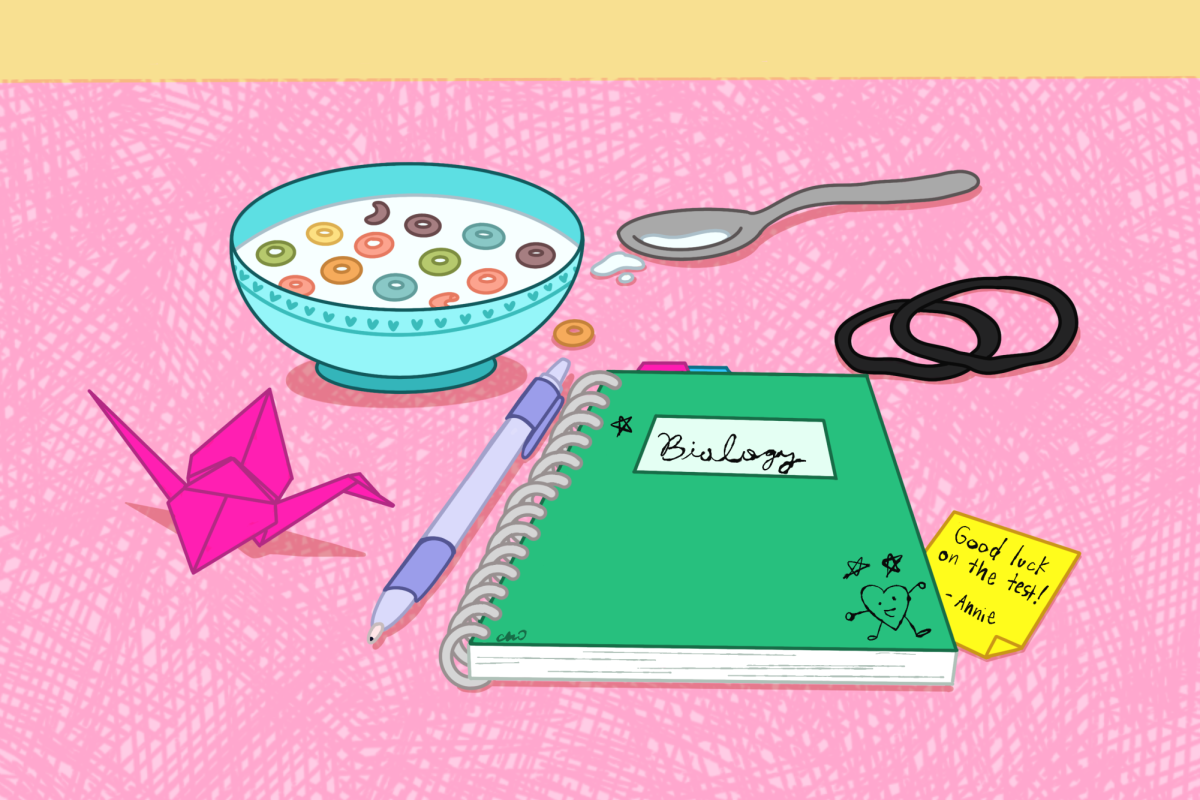Once a week I go to the grocery store. Without fail, a cashier will always make a comment about my mile-high stack of produce and ask where my ice cream is. (Don’t worry, it’s there, buried beneath the bags of spinach.)
My diet is primarily raw, sans heated food — I basically eat what was plucked from the ground or off a tree. The USDA suggests filling at least half a plate with fruits and vegetables a day. At the risk of sounding like someone’s middle school gym teacher, people just don’t make that happen, which is why the addition of juicing and green smoothies can help you not have to carry around a lunch box full of produce.
Juicing is the process of extracting fruit and vegetable juices from the pulp. Some argue juicing isn’t necessarily healthy because a majority of the fiber, an important part of the diet that increases fullness, is removed in the process.
But juice is not a substitute for whole food items — it’s a start to changing your view on nutrition.
Here’s the thing I’ve found about bottled juices and smoothies: they just don’t taste the same. Our flavor palette is overly accustomed to all things sweet and salty and juice companies capitalize on that. Bottled drinks bought in the store often taste sweeter, which in turn acclimates your taste buds to sugar.
Bottle or no bottle
Serious juicers suggest consuming raw juice immediately so enzymes, antioxidants and other phytonutrients are readily absorbed into our system. If you’re thinking that you may save your juice to drink later, fresher is better, said Stephen Talcott, professor of food chemistry.
Talcott said leaving juice out to sit over time was comparable to when a piece of fruit browns after it is left sitting out. This is because of “oxidase” enzymes found in fruit.
Talcott said leaving juice or smoothies out will also quickly form bacteria.
“These enzymes work very fast, so it is almost impossible to stop these reactions — even with the antioxidant vitamin C, adding acid, or lowering the temperature — so we can only hope to consume the product quickly or refrigerate to slow down the reactions,” Talcott said.
As for bottled drinks or drinks that are not raw, Talcott said those drinks undergo a process called pasteurization, a thermal treatment where the juice is heated, destroying harmful microorganisms for extended shelf life.
Talcott said that some nutrients and antioxidant phytochemicals are lost during pasteurization, but in his opinion the losses were negligible in comparison to the benefits.
It’s a debate in the wellness community and among bloggers whether manufactured juices like Naked or V8 are just as nutritionally sound as raw, fresh juices. However, keep in mind the expenses of bottled drinks.
Juicing is (not) expensive
Some people think that in order to expand your wellness umbrella, you have to overcompensate and empty out your pockets.
The majority of the population would likely choose a down payment on a car rather than a $1,200 juicer. The trick is a blender and a tightly knit mesh strainer. If you press on the pulp, juice will start to trickle out. It can actually be less messy than having to clean out all the excess pulp from a juicing machine. Or if you don’t have a strainer use a material called cheesecloth, which can be used to separate the juice and pulp as well.
Not just a trend
The market for wellness continues to swell, but cleaning one’s diet goes beyond sleek bottled drinks and trendy juice bars, which keep popping up in cities like Austin and College Station. Juicing dates back to the 1930s when Dr. Max Gerson developed a form of homeopathic treatment called the Gerson Therapy, which relies on the body’s ability to heal itself through nutrition.
The therapy is comprised of a plant-based diet and includes a religious regimen of consuming 15- to 20-pounds of raw fruits and vegetables in juice form, according to gerson.org.
Gerson believed the body could treat nutritional deficiencies, chronic diseases and even cancer through the process of detoxification and speeding up the waste removal process, which in turn strengthens the immune system.
As a society, we are so tired all the time. We are overworked from 24/7 workdays and it initially feels and tastes good to eat from the same boring and dull color palette. Add some color in your life.
Most people may not be treating a chronic illness, but nutrition and prevention go hand in hand.
Allison Rubenak is a senior telecommunications major and life and arts editor for The Battalion
The juicy truth about easy fruit intake
September 16, 2014
0
Donate to The Battalion
$1765
$5000
Contributed
Our Goal
Your donation will support the student journalists of Texas A&M University - College Station. Your contribution will allow us to purchase equipment and cover our annual website hosting costs, in addition to paying freelance staffers for their work, travel costs for coverage and more!









